#Jantar Mantar Jaipur
Text
Jantar Mantar Jaipur
One of the most accurate pre-modern observatories in the world, Jantar Mantar is thought to have been built in 1729 by the wise monarch Sawai Jai Singh II. It played a significant role in advancing the eighteenth-century understanding of the planets and other cosmic phenomena. Read more about Jantar Mantar Jaipur.

0 notes
Text
#Jantar Mantar Jaipur#Ancient Astronomy#Astronomical observatory#Sawai Jai Singh II#Jaipur#Rajasthan#India#Samrat Yantra#Jayaprakash Yantra#Sundial#Altitude measurement#Moon position#Eclipse observation#Unique architecture#Science#History#Culture#UNESCO World Heritage Site#Research projects#Scientific curiosity#Tourist attraction#Aesthetic pleasing#Astronomy#Ancient knowledge#Engineering skills#Lush gardens#Peaceful refuge
0 notes
Text

Jantar Mantar, Jaipur, India,
Built by Maharaja Jai Singh II
#art#design#stairwell#architecture#stairway#staircase#stairs#staircases#sculpture#observatory#india#jaipur#jantar mantar#science#maharaja#jai singh II#yellow
94 notes
·
View notes
Text

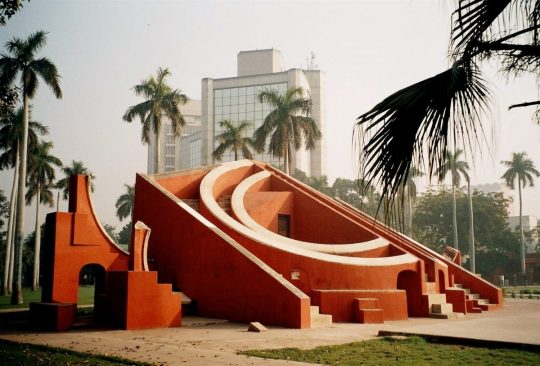

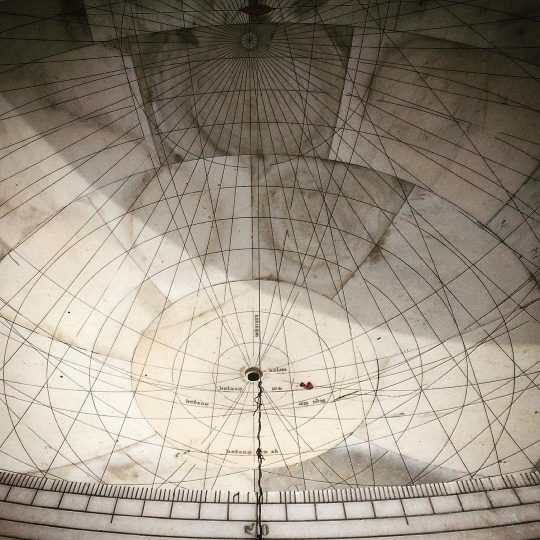
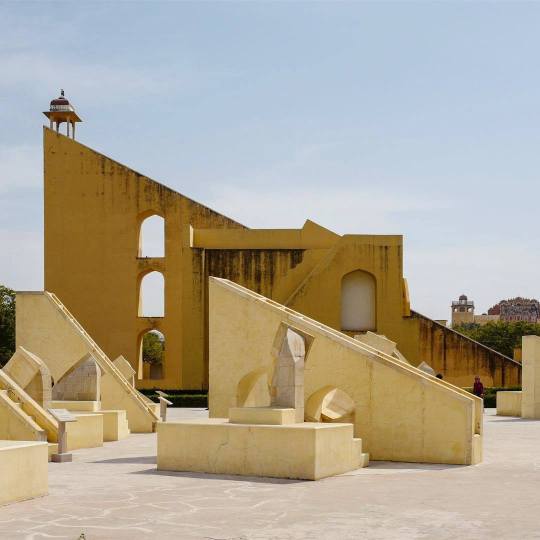






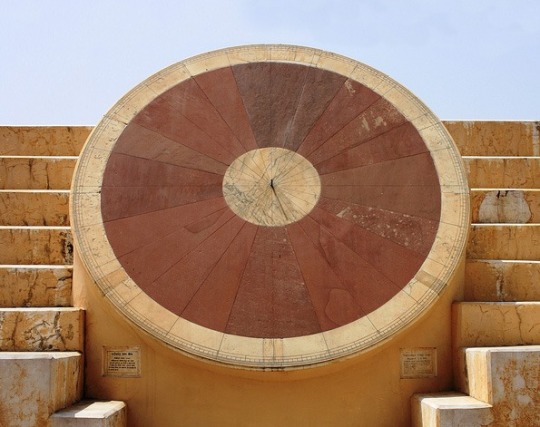
Jantar Mantar.
Es uno de los cinco observatorios astronómicos construidos en la India por el maharajá Jai Singh en 1728, quien además de guerrero era conocido por su afición a la astronomía.
Este monumento es Patrimonio de la Humanidad.
Ubicado en Jaipur, consiste en una colección de monumentos escultóricos, cuyas formas permitían el estudio de la evolución de las sombras producidas por el sol. El más impresionante es una estructura de 27 m de alto cuya sombra se mueve a razón de 4 metros por hora.
2 notes
·
View notes
Text
Places To Visit In Jaipur | Know About 10 Famous Places In Jaipur.
Without visiting Jaipur, a vacation to India would be incomplete. Jaipur, affectionately known as “The Pink City,” is a regal paradise of culture and tradition, rich with architectural marvels. Its historical structures are blushing pink, earning it the nickname “The Pink City.” Also, it is an important stop on the well-known tourist route known as the “Golden Triangle” of India. Read more
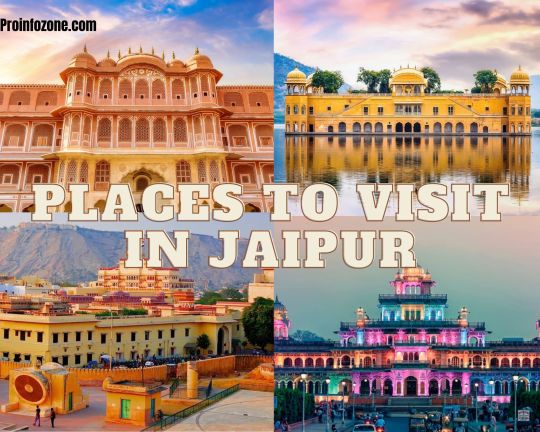
#places to visit in udaipur#india#traval#united states#nature#places to visit in jaipur at night#places to visit in rajasthan#Rajasthan#Hawa Mahal#Jantar Mantar#City Palace#Amber Fort#Jal Mahal#Jaigarh Fort#Birla Mandir#Nahargarh Fort#Panna Meena ka Kund#Albert Hall Museum
2 notes
·
View notes
Text
Discover the wonders of Jantar Mantar in Jaipur with our comprehensive guide Explore its rich history and fascinating facts
0 notes
Text
Jantar Mantar: Celestial Wonders Unveiled

In the heart of Jaipur, amidst the hustle and bustle of the vibrant Pink City, lies a celestial marvel that transcends time and connects us with the mysteries of the universe – the Jantar Mantar. This architectural masterpiece, built by Maharaja Sawai Jai Singh II in the early 18th century, stands as a testament to India's rich scientific heritage. In this blog, we embark on a journey to unravel the celestial wonders of Jantar Mantar, exploring its history, significance, and the astronomical marvels it houses.
A Glimpse into History
The Jantar Mantar, a collection of nineteen architectural astronomical instruments, was constructed with the vision of fostering a scientific temperament among the citizens of Jaipur. Maharaja Sawai Jai Singh II, a keen astronomer and mathematician, sought to create a space where astronomical observations and measurements could be conducted with precision. The construction began in 1728 and was completed in 1734.
Architectural Marvels at Jantar Mantar
The Samrat Yantra: Master of Time
At the heart of Jantar Mantar stands the Samrat Yantra, often referred to as the "Supreme Instrument." This colossal sundial is the largest of its kind globally, standing at an impressive 27 meters in height. The Samrat Yantra is a sundial of unparalleled accuracy, capable of measuring time with an astonishing precision of two seconds.
The Jai Prakash Yantra: Tracing the Celestial Sphere
For those intrigued by the movement of celestial bodies, the Jai Prakash Yantra offers a captivating experience. This instrument consists of two hemispherical bowls with markings representing the celestial sphere. Visitors can observe the position of the sun, moon, and stars, gaining insights into their trajectories across the night sky.
The Ram Yantra: A Giant Protractor
Imagine a giant protractor on the ground, and you have the Ram Yantra. This instrument is designed to measure the altitude and azimuth of celestial objects. Its simplicity and effectiveness make it an essential tool for astronomers studying the movements of celestial bodies.
The Misra Yantra: The Mixed Instrument
As its name suggests, the Misra Yantra is a combination of various instruments, each serving a unique purpose. This complex structure reflects the depth of Maharaja Jai Singh II's astronomical knowledge and his commitment to advancing scientific understanding.
Significance Beyond Measurements
Jantar Mantar's significance extends beyond its role as an astronomical observatory. It stands as a symbol of India's scientific prowess during a time when Europe was witnessing the Renaissance. Maharaja Jai Singh II, inspired by Islamic and European astronomy, merged various mathematical and technical traditions to create these instruments, showcasing India's ability to assimilate knowledge from diverse sources.
The observatory also played a crucial role in the development of the Indian calendar. Jai Singh II aimed to refine the existing calendar to align it more accurately with astronomical events, and the Jantar Mantar provided the necessary tools for these calculations.
Preserving a Celestial Legacy
Over the centuries, Jantar Mantar has weathered the sands of time, facing the challenges of nature and urbanization. However, its significance has not waned. Recognizing its cultural and scientific importance, UNESCO declared Jantar Mantar a World Heritage Site in 2010, ensuring its preservation for future generations.
Efforts to restore and maintain the instruments continue, allowing visitors to witness these celestial wonders in all their glory. The site serves as a living testament to India's scientific acumen and the timeless pursuit of understanding the cosmos.
Visitor Experience: Beyond the Ordinary
A visit to Jantar Mantar is not just a stroll through a historical site; it's a journey through the cosmos. As you walk among the giant instruments, you can't help but feel a connection to the ancient astronomers who used these very tools to decode the mysteries of the universe.
The immersive experience is enhanced by knowledgeable guides who unravel the secrets of each instrument, making the complex world of astronomy accessible to all. Whether you're a seasoned astronomer or a curious traveler, Jantar Mantar offers a unique blend of history, science, and cultural richness.
Conclusion: A Celestial Odyssey
In concluding our celestial odyssey through Jantar Mantar, we find ourselves standing at the intersection of history and science. Maharaja Sawai Jai Singh II's vision has transcended centuries, and the Jantar Mantar stands as a living testament to India's scientific achievements.
As we gaze upon the Samrat Yantra, tracing the movements of the celestial bodies with the Jai Prakash Yantra, and marveling at the precision of the Ram Yantra. Jantar Mantar beckons us to look beyond the ordinary, to explore the wonders of the universe, and to appreciate the timeless beauty of our shared celestial heritage.
Related Reads: 7 Exciting Places to Visit in Jaipur City
0 notes
Text
places to see in jaipur
Jantar Mantar is a historic astronomical observatory located in Jaipur, Rajasthan, India. It is one of the architectural marvels built by Maharaja Jai Singh II, the founder of Jaipur, in the early 18th century. The term "Jantar Mantar" translates to "calculating instrument" in English.Jantar Mantar is located near the City Palace and Hawa Mahal in the heart of Jaipur. It is easily accessible and is often included in the itinerary of visitors exploring the historical and cultural attractions of the city.
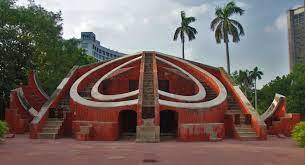
email- [email protected]
website-
#jaipur
0 notes
Text
Jaipur Jodhpur Jaisalmer Tour Package
Rajasthan’s 3 most favourite cities Jaipur Jodhpur Jaisalmer invites you to explore its magnificence and unparalleled majesty with its Royal Palaces and Renovated Havelis. Rajasthan, often known as the “Cultural Capital of India,” is one of those places that should be experienced fully, and our trip package has been meticulously designed to help you accomplish that.
Jaipur, Jodhpur, and Jaisalmer are three popular tourist destinations in Rajasthan, India. There are various tour packages available that cover all three cities. These packages typically include transportation, accommodation, meals, and sightseeing.
The Jaipur Jodhpur Jaisalmer tour package usually begins with a visit to Jaipur, the capital city of Rajasthan. Known as the "Pink City," Jaipur is famous for its forts, palaces, and colorful bazaars. Popular attractions in Jaipur include the Amber Fort, City Palace, Hawa Mahal, Jantar Mantar, and the Albert Hall Museum.
The second stop on the tour is Jodhpur, also known as the "Blue City" due to the blue-colored houses in the old town area. Jodhpur is home to the majestic Mehrangarh Fort, which offers stunning views of the city. Other popular attractions in Jodhpur include the Jaswant Thada, Umaid Bhawan Palace, and the bustling Sardar Market.
The final stop on the tour is Jaisalmer, a city located in the heart of the Thar Desert. Jaisalmer is known for its magnificent sandstone fort and havelis (old mansions). Visitors can also enjoy camel safaris, cultural performances, and shopping for local handicrafts at the bustling bazaars.
Overall, the Jaipur Jodhpur Jaisalmer tour package is a great way to explore some of the most popular tourist destinations in Rajasthan and experience the rich history and culture of the region.

#Jaipur#Jodhpur#Jaisalmer#Rajasthan#India#tour package#transportation#accommodation#meals#sightseeing#Pink City#Amber Fort#City Palace#Hawa Mahal#Jantar Mantar#Albert Hall Museum#Blue City#Mehrangarh Fort#Jaswant Thada
0 notes
Text
Best Jaipur Sight Seeing Packages
Jaipur, also known as the Pink City, is the capital of the Indian state of Rajasthan. It is famous for its rich history, stunning architecture as well as vibrant culture. There are many must-visit tourist destinations in Jaipur. These can explored with the help of various sightseeing packages available. Dhanvi tours offers the best Jaipur sight seeing packages.

#Jaipur#Pink city#Rajasthan#JaipurTour#Tours#destinations#trav#Hawa maha#Jantar mantar#Amer fort#Birla Temple#Jaigarh fort#Jal Mahal#Albert hall museum#tour packages
0 notes
Text

Jantar Mantar - Jaipur
via: Imperfect, impermanent and incomplet
photography by Jonathan Stokes
138 notes
·
View notes
Photo

a view of the Jantar Mantar Observatory in Jaipur.
Follow Souda on Tumblr
#modern#design#product design#home#decor#decoration#home decor#home design#interiors#interior design#living room#bedroom#kitchen#buildings#architecture#furniture#furniture design#industrial design#minimalism#minimal#living rooms#lighting design#lights#bathroom
29 notes
·
View notes
Text
Jantar Mantar Staircase Geometry

a view of the Jantar Mantar Observatory in Jaipur. - Architectural symmetry with staircases, arched doorways, warm beige walls, serenity, geometric design.
Follow Ceramic City on Tumblr
Source: https://soudasouda.tumblr.com/post/752398167311581184/a-view-of-the-jantar-mantar-observatory-in-jaipur
#modern#design#product design#home#decor#decoration#home decor#home design#interiors#interior design#living room#bedroom#kitchen#buildings#architecture#furniture#furniture design#industrial design#minimalism#minimal#living rooms#lighting design#lights#bathroom
6 notes
·
View notes
Text
A Tapestry of Heritage: Exploring India's Golden Triangle
Embark on a cultural odyssey through the heart of India as we unravel the enchanting story of the Golden Triangle. Composing the iconic cities of Delhi, Agra, and Jaipur, this journey transcends time, offering a kaleidoscope of history, architecture, and vibrant traditions. Join us on this virtual expedition as we delve into the cultural richness and majestic wonders that define the Golden Triangle.

I. The Heartbeat of Delhi: A Historical Tapestry
Delhi, where the ancient and the modern coexist harmoniously. Explore the remnants of ancient civilizations at Qutub Minar, walk the storied halls of the Red Fort, and witness the architectural marvels that stand as testament to Delhi's dynamic history.
II. Agra's Timeless Elegance: The Taj Mahal and Beyond
Step into the city that houses the epitome of love – the Taj Mahal. Beyond this iconic marvel, Agra unfolds its historical treasures at the Agra Fort and immerses you in the vibrant chaos of its markets.
III. Jaipur: The Regal Palette of Rajasthan
Jaipur, the Pink City, beckons with its regal splendours. Marvel at the Hawa Mahal, explore the opulent City Palace, and witness the celestial wonders at Jantar Mantar. Jaipur's streets narrate tales of valour, while its markets offer a feast for the senses.
IV. Culinary Journeys: Savouring the Flavors of the Golden Triangle
Indulge your taste buds in the culinary delights of each city. From Delhi's street food treasures to Agra's Mughlai cuisine and Jaipur's royal feasts, the Golden Triangle is a gastronomic adventure.
V. Hidden Gems: Beyond the Monuments
Uncover the lesser-known wonders that add depth to the Golden Triangle experience. From the mystical stepwells of Delhi to the historic gems nestled in the outskirts of Agra and Jaipur, discover the secrets that lie off the beaten path.
VI. Vibrant Markets: Shopping Extravaganza
Immerse yourself in the lively bazaars of the Golden Triangle. Delhi's bustling Chandni Chowk, Agra's vibrant Kinari Bazaar, and Jaipur's colourful markets offer a shopping spree filled with traditional crafts, textiles, and artefacts.
VII. Local Encounters: Conversations with Culture
Connect with the locals and witness the living traditions of the Golden Triangle. From traditional art forms to folk performances, engage in cultural exchanges that breathe life into your journey.
VIII. Practical Tips: Navigating the Golden Triangle with Ease
Equip yourself with essential tips for a seamless travel experience. From weather considerations to cultural etiquette, ensure you make the most of your Golden Triangle adventure.
IX. Golden Triangle Tours: Crafting Unforgettable Memories
Discover the convenience and insights offered by reputable tour operators. Whether guided by our seasoned experts or exploring at your own pace, tailor your Golden Triangle tour to create memories that last a lifetime.
Conclusion:
As the virtual dust settles on our journey through the Golden Triangle, we invite you to envision yourself amidst the grandeur of historic monuments, the hustle of vibrant markets, and the warmth of cultural exchanges. The Golden Triangle isn't just a destination; it's a living narrative that invites you to be part of India's rich tapestry. Come, explore, and immerse yourself in the timeless allure of this cultural masterpiece.
2 notes
·
View notes
Text
Jaipur: Jantar Mantar
.
.
#jantarmantar#jantarmantarjaipur#trending#photography#explore#trend#reels#incredibleindia#tourism#jaipur#rajasthan#india#jaipurdiaries#instagram#rajsthani#love#streets#photoshoot#rajputana#instagood#pinkcity#follow#kolkata#fashion#rajasthantourism
2 notes
·
View notes
Text
Top 5 Visiting Places in Jaipur
Jaipur is a cool city in India with lots of neat stuff to see. It's known as Pink City because most of the buildings are painted in pink color. If you're planning a trip there, here are the top 5 visiting places in Jaipur you have to check out:
Amber Fort (Amer Fort):
This place is super cool! It's like a big castle on a hill with a lake nearby. You can go inside and see fancy rooms with mirrors all over the walls. Plus, you can ride an elephant up to the fort, which is fun!
Hawa Mahal (Palace of Winds):
Imagine a building with lots of tiny windows that look like honeycombs. That's Hawa Mahal! It's tall and made of pink stone. People used to sit in those windows and watch parades and stuff without being seen. You can get amazing views of the city from there.
Hawa Mahal (Palace of Winds):
This is where kings used to live, and it's huge! There are gardens, fancy buildings, and even a museum with old clothes and things from the kings. The best part is the Peacock Courtyard, which is so pretty with all its colors.
Jantar Mantar:
It's like a big outdoor science museum! There are these giant instruments that were used to study the stars and time. You can see the biggest sundial in the world there, and it's cool to learn how people figured out time way back then.
Jaigarh Fort:
This fort is on top of a hill and has amazing views of the city. There's a huge cannon there called Jaivana, and it's famous for being the biggest cannon on wheels! You can explore the fort and pretend you're a king or queen.
So, if you're going to Jaipur, make sure to visit these awesome places. They're full of history, fun, and great views!
2 notes
·
View notes